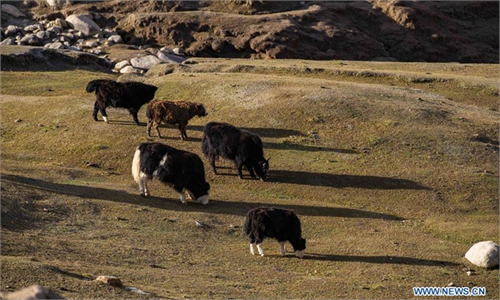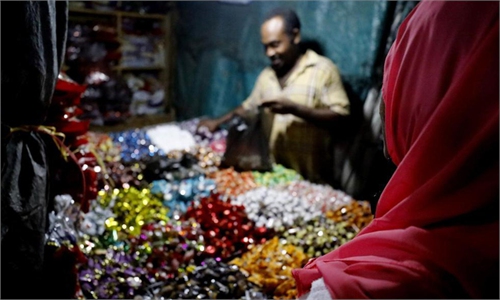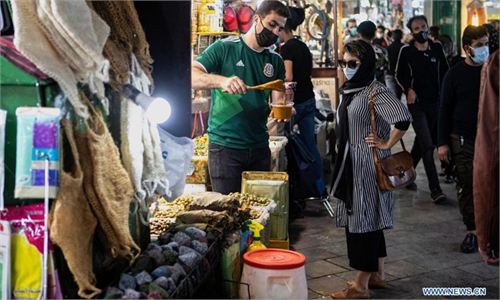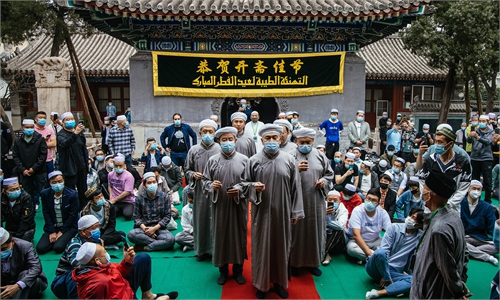Muslims around China enjoy Eid al-Fitr, refuting West’s accusations
Celebrating diversity
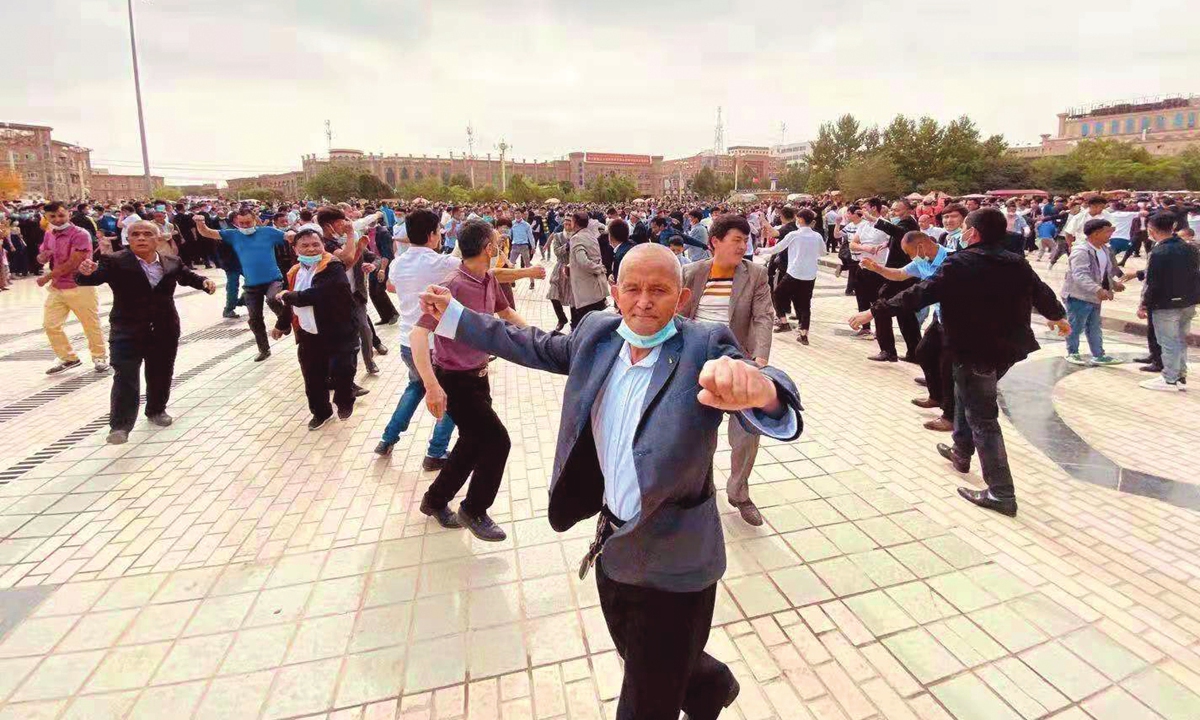
People dance to celebrate Eid al-Fitr in Kashi, Xinjiang on Thursday. Photo: Courtesy of Memet
Editor's Note:
Muslims across China celebrated Eid al-Fitr on Thursday while paying attention to virus prevention, as many parts of the world still suffer instability and uncertainty due to continued COVID-19 pandemic and regional conflicts in this past Ramadan period.
Though Western governments and media outlets in the past years have been frequently attacked China's policies in these ethnic minority regions, especially in the Muslim communities in Northwest China's Xinjiang Uygur Autonomous Region and South China's Hainan Province, these communities' continued development and prosperity refuted the scurrilous charges of "violating human rights."
Sanya, Hainan: Muslims get access to benefits of free trade port
In May, it already surpasses 30 C in Sanyan, South China's Hainan Province. It used to be the low season for tourism, but the situation has changed.
"Since Hainan has become a free trade port, we do not have an off-season anymore," Ha Zhibao, secretary of the Communist Party of China (CPC) Committee at a Huihui community in Shanya, told the Global Times.
Hainan has become China's most popular holiday destination, attracting millions of tourists with its tropical island scenery, beautiful beaches, luxurious hotels and favorable tax-free policies. The island's development is on the fast track as it is set to be the country's free trade port and largest special economic zone.
The Muslim community in Sanya is a distinguished group, with its long history and distinctive culture. Located beside the Sanya Phoenix International Airport, it has benefited from favorable policies and Hainan's rapid development in the past couple of years.
But the flourishing scene will not make its uniqueness and tradition fade.
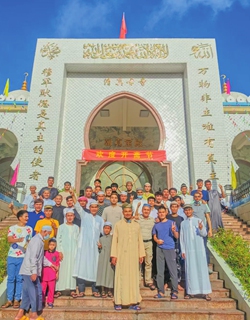
Hui people pose in front of a mosque in Sanya, Hainan Province while celebrating Eid al-Fitr on Thursday. Photo: Courtesy of Ha Chaojie
On Thursday morning, after light showers brought coolness, the Muslim residents celebrated their Eid al-Fitr for the year.Around 300 believers observed religious rituals in the North Mosque at Huihui community, the largest one of the four mosques here with a history of more than 30 years. After a brief prayer ceremony at the mosque, people returned home to continue the celebrations with their families.
The ceremony was conducted under strict anti-virus measures - everyone at the event was required to wear a mask; their temperatures were also taken, and they had to pray while maintaining a recommended distance from each adherent.
"We worked overtime to ensure the security of the community during the Ramadan and the Eid al-Fitr [period]," Zhang Shaohua, a vice secretary of CPC committee at the Huixin community, told the Global Times.
"Despite the virus prevention work, the traditions and rituals are all the same as usual," Ha introduced. "Residents all understand the importance of this work. After seeing what is happening in neighboring countries right now, we are content about living in a peaceful time and having a satisfying life." Ha said that many residents have answered the call of taking the COVID-19 vaccines.
Ramadan is usually the busiest month for Muslims in Sanya, and the six mosques there are brightly lit throughout the period. Outside the mosque, a large number of small merchants and hawkers were gathered; selling a variety of exquisite Muslim specialty dishes, and the bustling night market lasted until dawn the next day.
Like many other Muslims in China, Sanya Muslims love beef and mutton. But they have also developed their own special menu after living on the island for hundreds of years - seafood and coconut rice are welcomed on dinner tables, and rice noodles are popular snacks.
In Tang Dynasty (618-907), some Persians and Arabian businessmen settled in Hainan after traveling by boat; some Muslims came from Vietnam to escape wars in the Song Dynasty (960 - 1279) and Yuan Dynasty (1279-1368). In recent years, more Muslims have moved here from the mainland, such as Ningxia Hui Autonomous Region, Xinjiang or other regions, to seek greener pastures.
Nowadays, there are two major Muslim communities, Huihui and Hixin, which home to more than 9,400 residents, of which the majority are of the Hui people. Most of them earn a living by doing business and working in the tourism industry.
There are six mosques here, with six imams and about 60 people working in religious affairs, according to the publicity department of Sanya.
However, in recent years, like many other Muslim groups in China, Sanya's Muslim community has also been the target of disingenuous coverage in Western media, along with false accusations on matters ranging from local religious practices to educations.
"We are implementing our policies and rules and have been respecting residents' opinions," Ha said. "Probably it needs more communications and a period of time for the residents to understand the policies, but some reports we learned are just hyping and exaggerating the facts."
"Local communities and schools are willing to accommodate and accept all kinds of beliefs and thoughts. We welcome people from diverse cultures to visit the Muslim community and learn about our culture," Li Shaohua, executive director of Hainan Islamic Association, told the Global Times.
"Under the background of Hainan Free Trade Port, the government encouraged all students to learn foreign languages, including Arabic," Li noted.
Niujie Street, Beijing: Busy hub welcoming local, international prayers
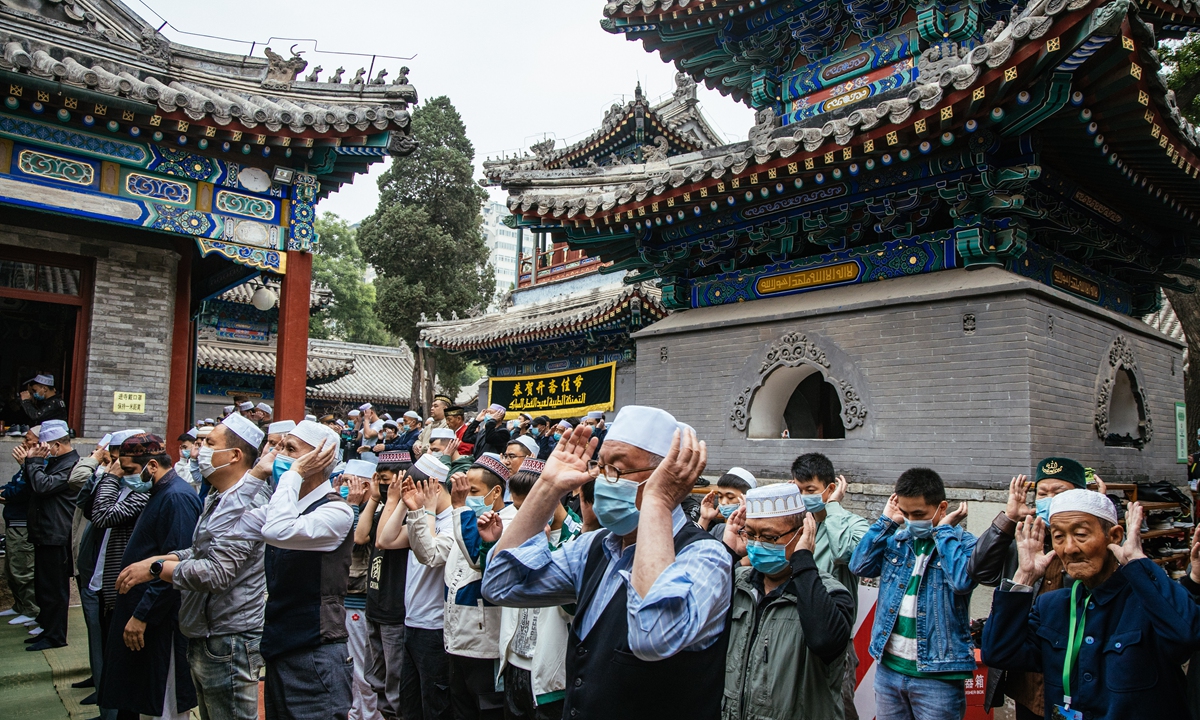
Muslims gather at Niujie Mosque, Beijing to celebrate Eid al-Fitr. Photo: Li Hao/GT
On Thursday morning, many local and foreign Muslims in Beijing celebrated Eid al-Fitr at the Niujie Mosque, the largest mosque in Beijing. It is the first public celebration since the outbreak of the COVID-19 epidemic in the capital.At around 8 am, people begun to show up on streets near the mosque.
Halal restaurants, vegetable markets, supermarkets, beef, and mutton shops, and snack shops near the mosque hung banners that read "Wishing Muslim friends a happy Eid al-Fitr!"
On Niujie Street near the mosque, shop owners along the street had made adequate preparations for the festival and the large volume of people.
In a halal meat shop, large chunks of freshly cut beef and mutton hang above the glass counters, with the owner of the shop standing by the street to see people passing by for morning prayer at the mosque.
Muslims wearing taqiyah skullcaps cycled with friends to the direction of the mosque, talking and laughing all the way. Women in hijabs led their parents and followed the people across the road. The closer to the mosque one got, the more people became. Due to the excessive influx of people, there were security personnel on duty at every intersection to control the traffic.
After going through a simple scan-code registration and security check, at 8:30 am, Muslims entered the mosque for morning prayers. In addition to Chinese Muslims, many foreign Muslims living in Beijing also come to celebrate the day.
Haider, a student from Pakistan, who studies at Beijing Institute of Graphic Communication, said that this was the first time he had come to Niujie Mosque to celebrate Eid al-Fitr. "I plan to celebrate with my friends and eat delicious food with them after worship," Haider said.
Hafiz Junaid Ali, also from Pakistan, told the Global Times that he has lived and worked in China for several years.
"It's nice to meet all people here in the Mosque,"he said.
"I am glad to live here in China amid the epidemic situation," said Ali.
The prayer started at 9:30 am, and about 20 minutes later, after finishing prayers, Muslims walked out of the mosque and enjoyed some milk tea, Baozi, and fried cake along nearby streets with friends and family.
A Muslim woman lined up to buy snacks told the Global Times that her boss gave a half-day off to let Muslim workers celebrate the day.
Xinjiang: A big party for everyone
Residents in Xinjiang Uygur Autonomous Region have a one-day holiday for the Eid al-Fitr. Local Muslim families usually make traditional food in advance and enjoyed the day with their families and friends. Some may also visit deceased loved ones.
Before 7 am, some residents in Urumqi, the capital of Xinjiang, arrived at the Yanghang Mosque to prepare for the salat al-Eid for Eid al-Fitr. Following the instructions of the imam, they concluded the morning prayers after the month of fasting and the next thing was to go home to celebrate the day with their families while enjoying delicious food.
Many people in Kashi of southern Xinjiang chose to celebrate the festival in a different way - wearing traditional clothes and hats, they happily danced with relatives and friends as well as visitors in front of the Id Kah Mosque and bid each other "Eid Mubarak!"
On Thursday, some people in Aksu Prefecture visited the cemetery. After a little cleaning and placing of flowers, they put down blankets in front of tombs and kneeled to pray.
Many people in Xinjiang posted their celebrations of dancing and enjoying large meals with families online. And some tourists in Xinjiang also shared these joyful moments through videos and pictures.


